Magnesium is a light and strong metal that has become increasingly popular in manufacturing industries due to its unique properties. However, welding magnesium can be a daunting task for many welders, as it requires a specific set of skills and techniques to ensure a successful weld.
In this article, we will explore the ins and outs, as well as how to MIG weld magnesium, from preparing your workspace to selecting the right welding equipment and consumables.
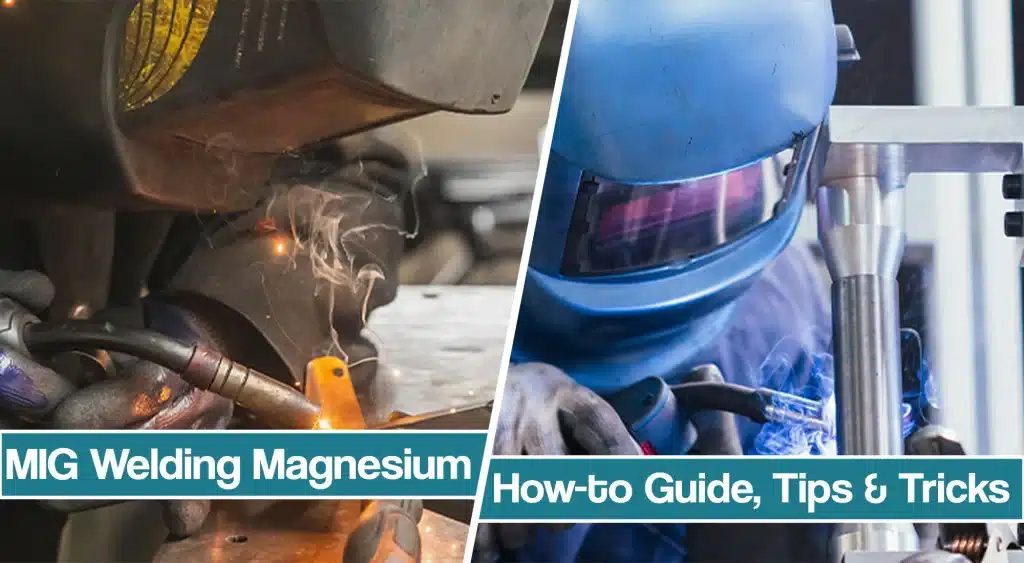
Whether you are a seasoned welder or a beginner, this guide will provide you with the knowledge and confidence to weld magnesium with ease and precision.
Challenges Of Welding Magnesium Alloys
Welding magnesium and magnesium castings present several challenges that must be addressed to ensure a successful weld. One of the primary challenges is the high reactivity of magnesium, which can lead to rapid oxidation and the formation of a brittle oxide layer on the surface of the metal.
Additionally, magnesium has a low melting point and high thermal conductivity, which can make it difficult to control the weld pool, and avoid burn-through and cracking due to thermal expansion.
To avoid these issues, it is important to properly prepare the magnesium surface by removing any oxidation or contamination prior to welding.
This can be achieved through mechanical cleaning, chemical cleaning, or a combination of both. It is also crucial to use the correct welding parameters, such as a low welding current and high travel speed, to minimize heat input and prevent burn-through.
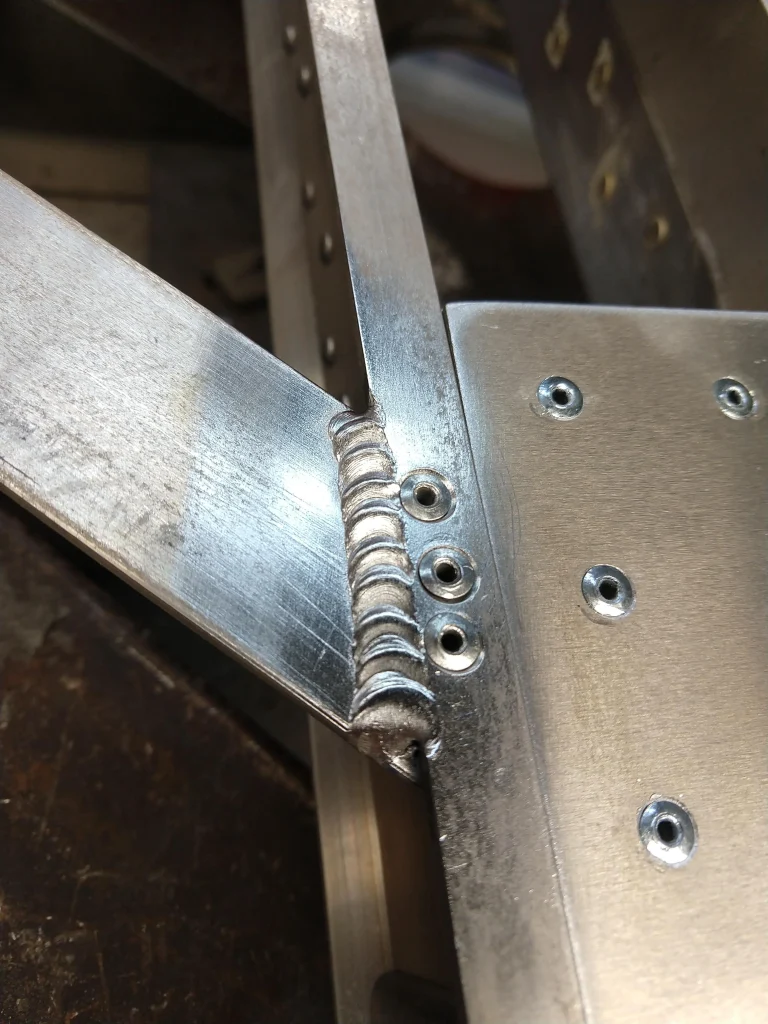
Using a shielding gas that is specifically designed for welding magnesium, such as argon or helium, can also help to protect the metal from oxidation and ensure a clean weld. It is also recommended to use a filler metal that is compatible with the magnesium alloy being welded and to avoid using materials that contain zinc, as this can lead to the formation of brittle intermetallic compounds.
Proper ventilation and personal protective equipment should also be used when welding magnesium, as the fumes and dust produced during welding can be hazardous to health. By taking these precautions and following proper welding techniques, welding magnesium can be done safely and effectively.
What Are The Best Magnesium Welding Methods?
Here are several common welding processes used to join magnesium, each with its own advantages and limitations. These methods include:
- Gas Tungsten Arc Welding (GTAW/TIG): Tungsten Inert Gas is a popular welding method for magnesium due to its precise control and high-quality welds. GTAW involves using a tungsten electrode to create an arc that melts the magnesium and filler metal, if needed, to form a weld. A shielding gas, usually argon or helium, is used to protect the weld from oxidation. GTAW is well-suited for thin materials and complex shapes, but it is a relatively slow process and requires a skilled operator. If you wish to learn more, check out our dedicated article on TIG welding magnesium alloys and castings.
- Gas Metal Arc Welding (GMAW/MIG): Metal Inert Gas is a faster and more economical welding method than GTAW, but it requires a higher level of skill to achieve quality welds. In GMAW, a wire electrode is fed through a welding gun, which creates an arc that melts the magnesium and filler metal, if needed. A shielding gas is used to protect the weld from oxidation. GMAW is well-suited for thicker materials and higher production rates.
- Laser Welding: This method uses a high-powered laser beam to melt the magnesium and create a weld. Laser welding offers precise control and minimal distortion, but it is a relatively expensive process and requires a skilled operator.
- Friction Stir Welding (FSW): FSW is a solid-state welding process that involves using a rotating tool to stir the magnesium and create a weld. FSW is well-suited for joining magnesium alloys with high strength and low ductility, but it requires specialized equipment and is not suitable for all applications.
- Resistance Spot Welding (RSW): RSW is a fast and economical welding method that involves using electrodes to apply pressure and heat to the magnesium to form a weld. RSW is well-suited for thin materials and high-volume production, but it requires specialized equipment and is not suitable for all magnesium alloys.
How To MIG Weld Magnesium? – Overview
To MIG weld magnesium, it is necessary to first prepare the surface by removing any oxidation or contamination. This can be done through mechanical or chemical cleaning. Once the surface is clean, set up the welding equipment, including a MIG welder with a high-frequency start feature and a spool gun for feeding the filler metal. Choose a filler metal that is compatible with the magnesium alloy being welded and avoid materials that contain zinc, which can cause brittle intermetallic compounds.
Next, set the welding parameters, including a low welding current and high travel speed to prevent burn-through. Adjust the wire feed speed and shielding gas flow rate as needed to achieve the desired weld quality.
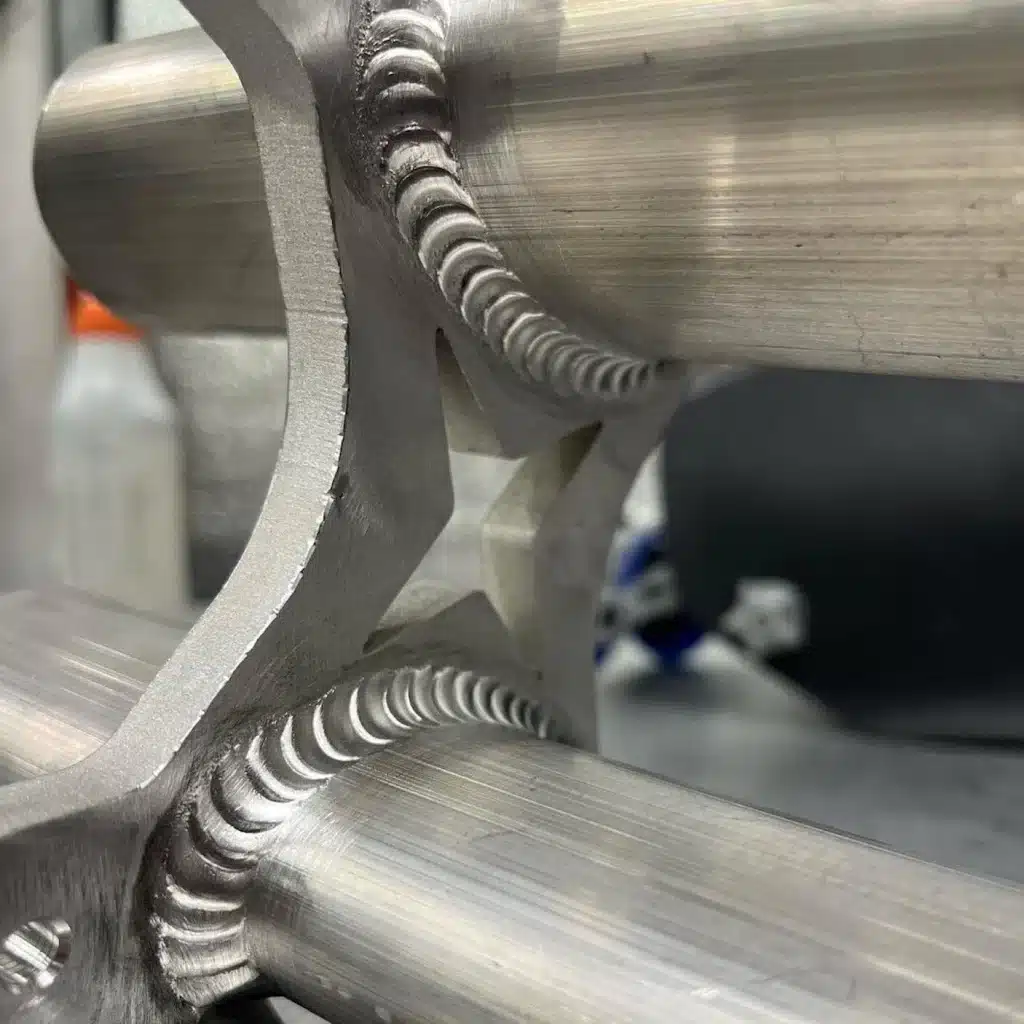
When welding, hold the MIG gun at a slight angle to the workpiece and move it in a steady motion to create a smooth, even weld. Use a push technique to direct the weld puddle and avoid burn-through. After welding, allow the weld to cool slowly and avoid rapid quenching, which can cause distortion or cracking.
Clean the weld with a wire brush or abrasive pad to remove any surface oxides or contaminants. It is important to note that MIG welding magnesium requires a higher level of skill and expertise than welding other materials, so it is recommended to seek the guidance of a qualified welder or trainer before attempting this process.
Magnesium Weld Preparation For MIG Welding
Surface preparation is a critical step in welding magnesium because it is highly reactive with oxygen and other contaminants. Proper cleaning and preparation of the magnesium surface are necessary to ensure a clean, oxide-free weld. Mechanical cleaning involves removing surface contamination and oxides through abrasion or grinding. The most commonly used methods include sandblasting, wire brushing, and grinding.
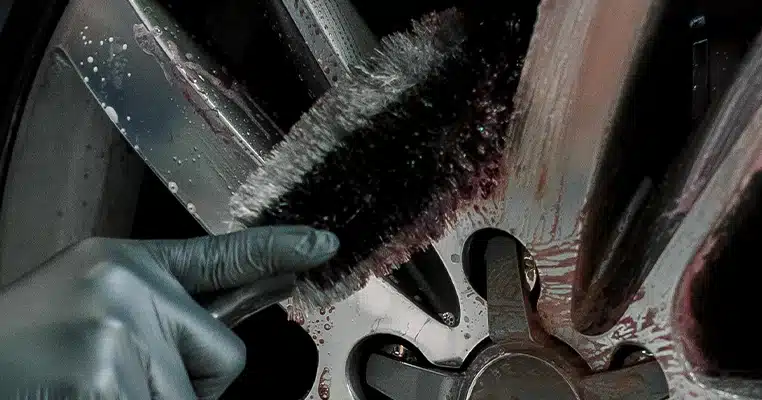
Chemical cleaning involves using a solution to dissolve surface oxides and contaminants. Commonly used solutions include nitric acid, chromic acid, and hydrochloric acid. Combination cleaning involves using both mechanical and chemical methods. This approach is often used for highly contaminated surfaces or when a high-quality weld is required.
Safety Precautions When Welding Magnesium
Welding magnesium can pose several potential risks due to its high flammability and reactivity with oxygen. Magnesium is highly flammable and can ignite at relatively low temperatures.
During welding, the heat generated by the welding process can cause the magnesium to ignite, resulting in a fire or explosion. The risk of fire or explosion can be increased if the magnesium is contaminated with oil, grease, or other flammable materials.
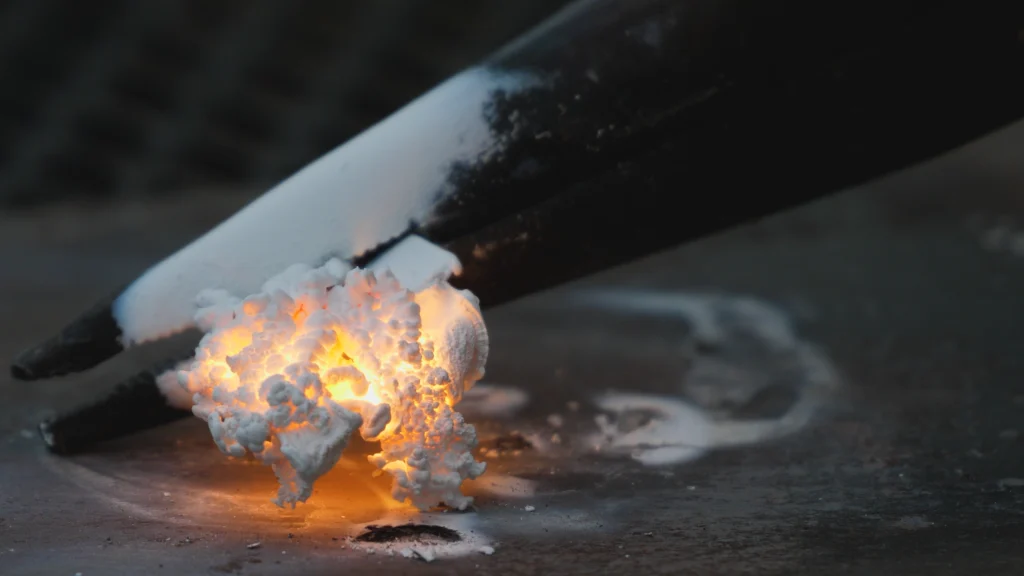
Welding magnesium can produce hazardous fumes and gases, which can cause respiratory problems and other health hazards. These fumes can also contain fine particulate matter, which can cause lung damage if inhaled over a prolonged period. Welding magnesium produces intense heat, which can cause severe burns if proper protective equipment is not worn. Burns can also occur if hot molten metal splatters onto the skin.
Best MIG Welder For Magnesium?
To successfully weld magnesium using the MIG welding process, a special kind of welding machine is required, known as a “pulsed MIG welder” or “synergic MIG welder.”
These machines are designed to provide precise control over the welding parameters, such as the welding current, voltage, and wire feed speed.
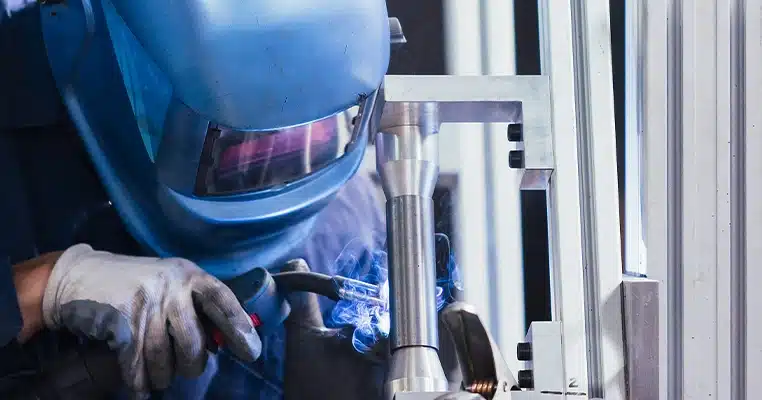
Pulsed MIG welding machines are preferred for welding magnesium because they allow for lower heat input and a more stable arc, which is critical for preventing burn-through and achieving a high-quality weld. Synergic MIG welding machines are also suitable for welding magnesium because they use advanced software to automatically adjust the welding parameters based on the type of material being welded and the thickness of the metal.
In addition to the welding machine, a spool gun is required for feeding the filler wire. This is because magnesium wire is softer than other metals and can become easily damaged if it is fed through a standard MIG gun. The spool gun provides a smooth and consistent feed of the filler wire, which helps to ensure a high-quality weld.
What Wire Filler (MIG Welding Wire) Should You Use For Magnesium Alloys?
The preferred filler wire for MIG welding of magnesium is a high-purity alloy of magnesium called AZ61A. This alloy contains 6% aluminum and 1% zinc, which provides good strength and corrosion resistance to the welding process. Aluminum filler metal can even be used for magnesium-aluminum alloys.
AZ61A is the most commonly used filler wire for magnesium welding because it is highly compatible with base metal and produces high-quality welds. It has a melting temperature of around 1150°C (2102°F) and flows easily into the weld joint, forming a strong bond with the magnesium.
However, keep in mind that AZ61A can be more expensive than other MIG wire types. While AZ61A filler rod is widely used, it may not be readily available in all locations, which can be a concern for welders who need a reliable supply of filler wire. Theoretically, you can use it when welding aluminum, but it is not recommended.
Best Shielding Gas For MIG Welding Magnesium?
The best shielding gas for MIG welding magnesium is pure argon gas. Argon provides good protection against atmospheric contamination, which can cause defects in the weld, such as porosity and lack of fusion. It also helps to stabilize the arc, leading to better weld quality and reduced spatter.
Argon gas is also preferred because it does not react with magnesium, which can lead to the formation of oxides and other contaminants. This is important because magnesium is highly reactive with oxygen, and even small amounts of atmospheric contamination can cause significant welding defects.
Welding Technique
The travel speed should be slow and consistent to prevent overheating and distortion of the material. Welding too fast can result in incomplete fusion or a weak weld while welding too slow can result in excessive heat input, which can cause distortion or other defects. The angle of the welding torch should be kept at around 15-20 degrees from the workpiece to ensure proper penetration and shielding.
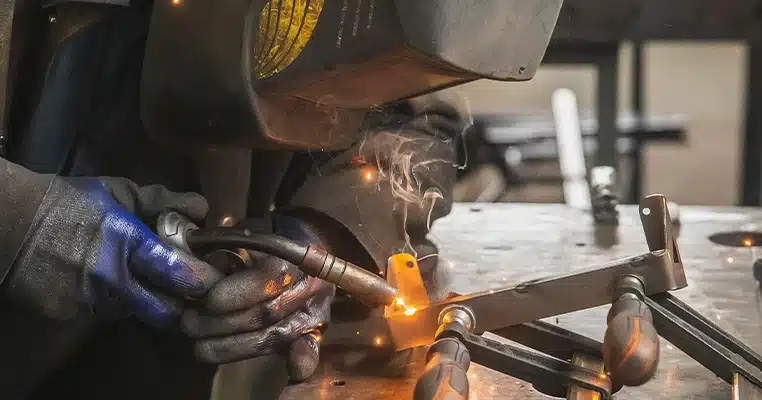
Pulsing can be used to control the heat-affected zone and reduce the risk of warping or other defects. The pulse frequency and amplitude should be adjusted based on the material thickness and welding current.
Magnesium Post Weld Treatment
After welding magnesium castings, allow the workpiece to cool slowly to room temperature to prevent warping or weld cracking. Clean any surface contamination or spatter from the weld using a stainless steel wire brush or chemical cleaner. Monitor the workpiece closely for signs of cracking or other defects, and make any necessary adjustments to the welding technique or post-weld treatment to achieve a high-quality weld.
Tips For Successful Magnesium MIG Welding
- Ensure proper surface preparation, including cleaning, degreasing, and sandblasting the workpiece.
- Use a MIG welding machine specifically designed for welding magnesium and ensure it is properly calibrated.
- Use the correct filler wire and shielding gas, such as AZ61A filler metals and argon gas.
- Use a low current and slow travel speed to prevent overheating and distortion of the material.
- Keep the welding torch at a 15-20 degree angle to the workpiece to ensure proper penetration and shielding.
- Use a small, consistent weaving motion when welding thicker materials to ensure proper fusion and penetration of the weld.
- Monitor the weld closely for signs of cracking, porosity, or other defects, and adjust the technique as necessary.
- Allow the workpiece to cool slowly after welding to prevent warping or cracking.
- Perform a stress-relief heat treatment and aging process to improve the strength and corrosion resistance of the weld and avoid stress-corrosion cracking.
- Always wear appropriate personal protective equipment, use a class D fire extinguisher, and work in a well-ventilated area to avoid potential health hazards.
Conclusion
MIG welding magnesium requires proper equipment, technique, and safety precautions to achieve a high-quality weld. The surface preparation, choice of filler wire, shielding gas, and post-weld treatment are critical factors that must be carefully considered to prevent cracking and other defects.
By following the proper procedures and experimenting with different settings, it is possible to produce strong, corrosion-resistant welds on magnesium components, similar to TIG weld magnesium.
However, welding magnesium can be dangerous if proper safety measures are not taken, and it is important to always wear appropriate personal protective equipment and work in a well-ventilated area.





